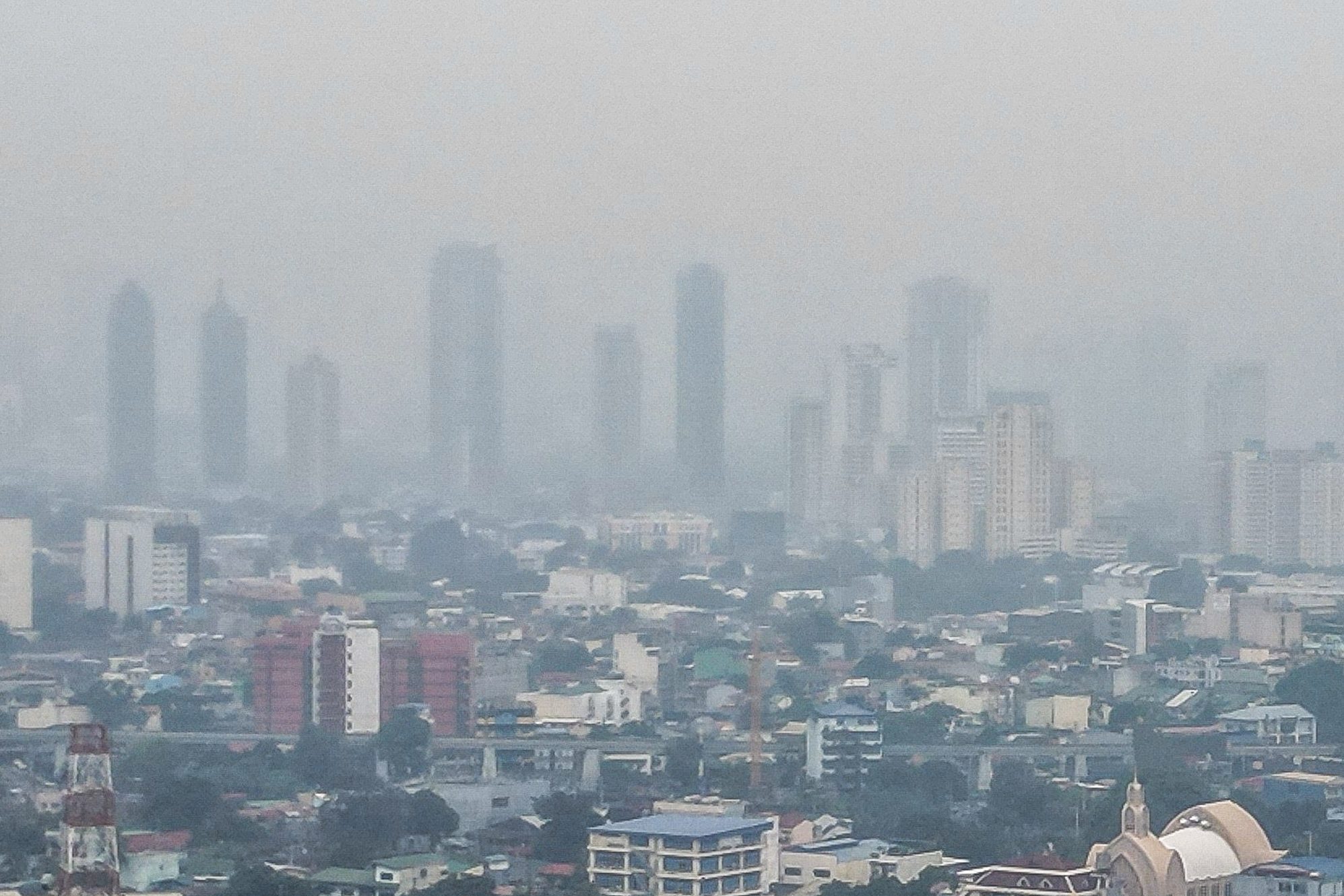SUMMARY
This is AI generated summarization, which may have errors. For context, always refer to the full article.

MANILA, Philippines – Metro Manila joined parts of Calabarzon in suspending classes on Friday, September 22, with local government units citing volcanic smog or vog from Taal Volcano.
But it turns out that the capital region was only seeing smog, unrelated to the volcano, on Friday.
What’s really happening?
Science and Technology Secretary Renato Solidum Jr. said in an interview on state-run PTV that a natural phenomenon called thermal inversion is occurring.
“‘Yung hangin, habang tumataas ang altitude papunta sa kalawakan, ay mas malamig. Pero ‘yung malamig na hangin na iyon ay nasa ibabaw lamang, kaya ‘yung mga smoke at fog…imbis na umangat at ma-disperse ay hindi umaangat dahil nga natutulak ng malamig na hangin pababa. Kaya mapapansin natin, buong Kamaynilaan at karatig na probinsiya ay makulimlim…. ‘Yun po ay smog, smoke and fog,” Solidum explained.
(As air rises into the atmosphere and its altitude increases, it gets colder. But this cold air ends up pushing smoke and fog downwards, so the smoke and fog are unable to rise or be dispersed. So, if you notice, the entire Metro Manila and nearby provinces have overcast skies. That’s smog, smoke and fog.)
“At mapapansin ‘nyo, hindi mahangin…kaya hindi napapadpad o nadi-disperse ang ating mga smog,” added Solidum.
(And if you notice, it isn’t windy, that’s why smog isn’t easily getting dispersed.)
The Philippine Atmospheric, Geophysical, and Astronomical Services Administration (PAGASA) also explained in a Facebook post that “thermal inversion occurs when layers of the atmosphere don’t mix,” which causes aerosols or very small particles to get trapped.
Why is there smoke in Metro Manila?
Solidum said the smoke in Metro Manila is due to vehicle exhaust emissions. The smoke mixes with fog, causing smog.
In contrast, high sulfur dioxide emissions are causing the vog in the Taal Volcano area in Batangas province.
Until when will Metro Manila have smog?
Smog is not rare, especially in the congested metropolis.
“’Yung smog kasi ‘pag umaga, nandiyan ‘yan…habang may thermal inversion, hindi masyadong nadi-disperse ‘yan. Kung lumakas ang hangin at nawala ‘yung thermal inversion…madi-disperse na siya nang tuluyan,” Solidum said.
(Smog is typically present in the morning…and while thermal inversion is happening, it won’t be dispersed. If winds become stronger and we no longer have thermal inversion, the smog will eventually get dispersed.)
PAGASA also said thermal inversion usually “disappears later in the day as heat from the sun allows the mixing of the air, allowing the aerosols to disperse.”
But if skies remain cloudy, this “may reduce surface heating,” and haze would persist.
If Metro Manila doesn’t have vog, is it safe?
Not necessarily. Smog can still affect people’s health.
“Kapag heavy ang pollution tulad nito…dapat nagma-mask po tayo kapag lumalabas para hindi natin malanghap nang tuluyan ang mga pollutants,” Solidum said.
(When pollution is heavy, such as today, we should wear face masks when going out so we won’t inhale pollutants.)
The science and technology secretary added that it is best to stay indoors, with windows and doors closed. – Rappler.com
Add a comment
How does this make you feel?
There are no comments yet. Add your comment to start the conversation.